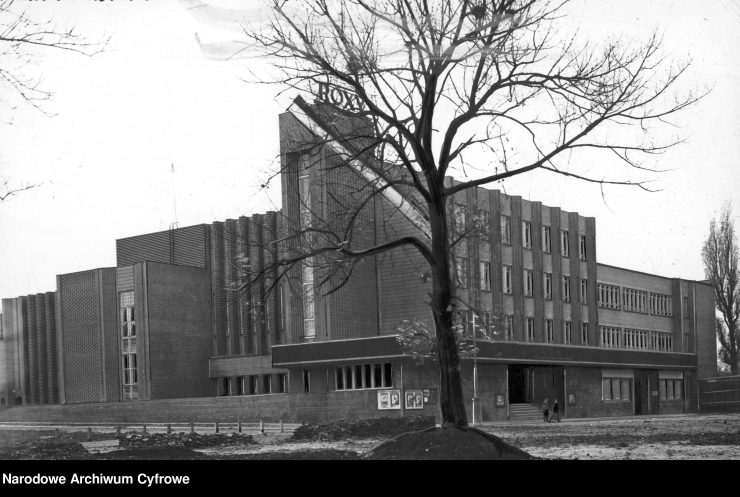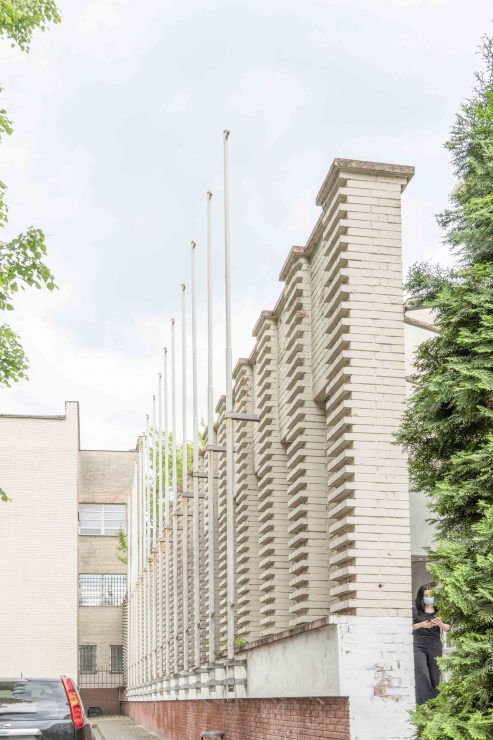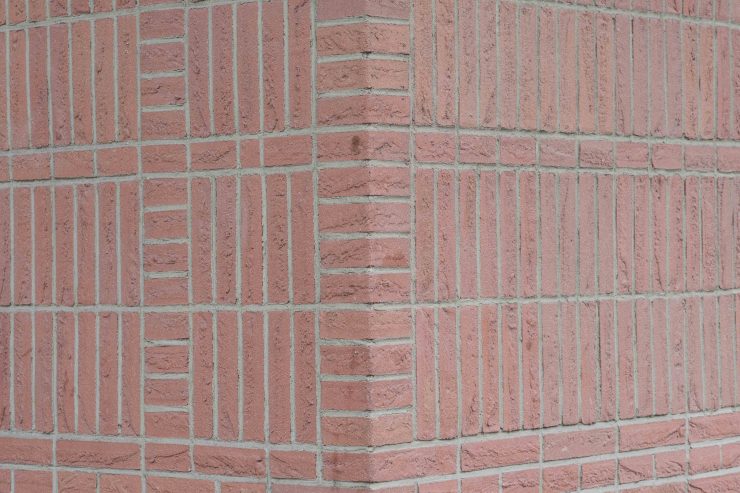
Railway Workers’ House at Fedkovycha St, 54-56
In the 1920s and 1930s educational and entertainment clubs were increasingly established for workers of various institutions. For the modern organization of society, it was important not only to control private life through the new rules of living space, but also the public pastime of «a new man».
- Constructed: 1930 - 1938
- Style: expressionism, modernism
- Architects: Romuald Miller Henryk Zaremba

Industrialization and progress brought large masses of people to the city, who needed not only somewhere to settle, but also to provide space for entertainment, time for education and a place for informal communication. Clubs became such a space.
There were several workers’ clubs in Lviv, among which the most famous were the Club of Utility Workers (now the Khotkevych Palace of Culture), the Medical Chamber or the Medical Workers’ Club (now the Department of Health Care) and the Lviv Railway Workers’ House which will be discussed below.
The construction of the railway worker’s house began in 1930. The Lviv railway received a ready-made project from Warsaw, the author of which was the famous Warsaw architect Romuald Miller. In Lviv architect Henryk Zaremba was appointed as the construction manager. The project was put into service in 1938 and partially completed after the war, in 1949 [1].
The building was not only intended to satisfy the leisure of the railway workers, but also to show with its presence the beauty and power of progress, which the architects depicted through the formal language in the execution of the facade and materials. The project impresses with the play of volumes: the right part of the facade is stretched horizontally, the left − rises vertically upwards. Speakers add protruding patterns of bricks, which decorate both entire walls and serve as frames for windows.
The architect and builders managed to capture in this project a turbulent time that was gaining momentum. Then life changed dramatically and was reflected in new architectural forms. In fact, time in new architectural projects became the fourth dimension in architecture [2]. Buildings ceased to be static and transformed not only into a game of forms, but also of experiences. Now people had simultaneously to perceive transparency, asymmetry, interpenetration of landscape and architecture.
Because of the gray cement brick, the house seems to hang in the air, resting on “the red base”, because the ground floor is separated from the main part of the facade by red clinker brick cladding. Gray cement brick [3] was a new material at that time, it was used as the main material for building a house, as a facing material (instead of plaster) and as a finishing material, as a geometric decoration.
The use of gray cement bricks in the cladding of buildings was a well-known technique of the architect Romuald Miller as well as the Warsaw School of Architecture. In Lviv such architectural solutions are practically not found, with the exception of a few projects. Even later, in the 1960s and 1970s, Soviet architects began to use gray cement brick decoration in their projects, which often look like copies of Miller’s projects.
The building received a large assembly hall, a library, a billiard room, and a room for playing chess [4]. The Roxy cinema also functioned in the premises, thanks to which the name of the building “Roxy” actually settled down among the townspeople. In Soviet times and until now, the Railway Worker’s House actually retained its main function as a cultural building under the name of the House of Science and Culture of the Lviv Railway.
Source and literature:
- [1] Lewicki, Jakub. Regeneracja i modernizacja. Architektura Lwowa okresu dwudziestolecia międzywojennego. Waraszawa: Narodowy Instytut Polskiego Dziedzictwa Kulturowego za Granicą Polonica, 2021:312-314
- [2] Hilde Heynen. Architecture and Modernity. A Critique. MIT Press, 1999:20-25
- [3] Cegła cementowa jej wyrób i użycie (wskazówki dla używających cegłę cementową, Warszawa 1930
- [4] https://modernism.lvivcenter.org/#/uk/map/object/2566/photo/0
















